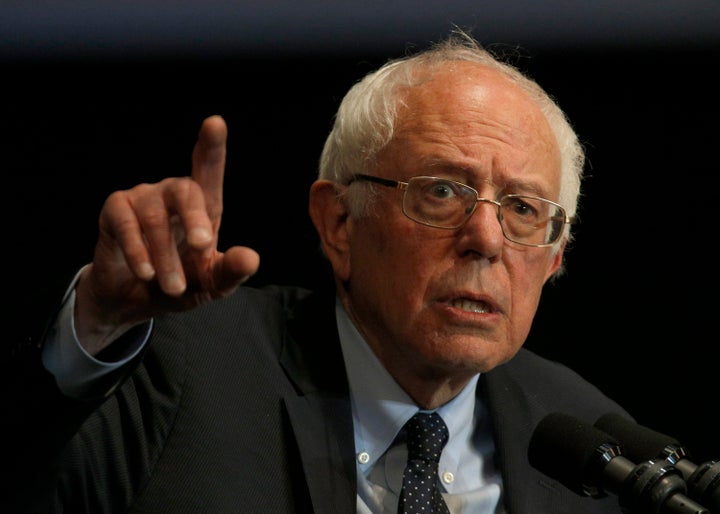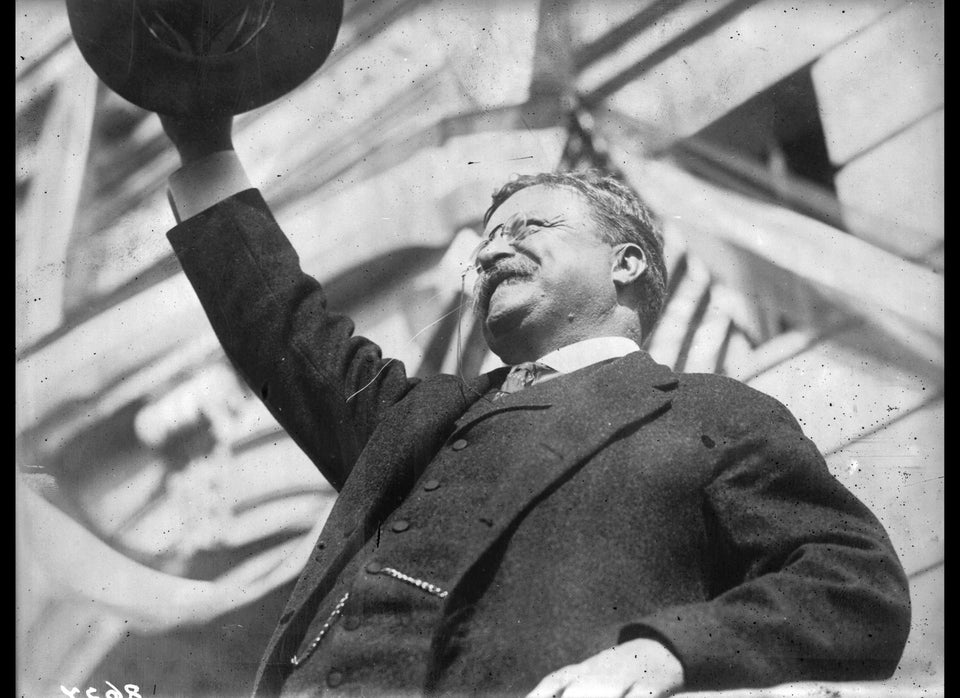
The Bernie Sanders health care plan, which the Vermont senator released this week, sounds pretty spectacular at first blush. It’s a proposal to create a single-payer system, which means that Sanders would wipe away existing insurance arrangements and replace them with a single government program. Everybody would get insurance, free of co-pays or deductibles.
That’d be an upgrade in benefits, even for seniors on Medicare. And while people would have to pay higher taxes, Sanders claims most people would come out ahead financially because they wouldn’t be paying private insurance premiums anymore. A typical middle-class family would save about $5,000 a year, according to a rough analysis commissioned by Sanders' presidential campaign, while society as a whole would end up saving something like $6 trillion over the next decade.
To help pay for his plan’s unprecedented benefits, Sanders proposes to extract unprecedented savings from the health care system. Here is where the details get fuzzy and hard to accept at face value, even beyond the usual optimistic assumptions that figure into campaign proposals. Sanders expects a large portion of the savings to come from reductions in administrative waste, because insurance billing would basically end. Another big chunk would come from squeezing the industries that produce health care services and supplies -- and squeezing those industries hard.
That last part should set off alarm bells for anybody who remembers the fight to pass the Affordable Care Act. Two particular episodes from 2009 -- one widely publicized, one barely noticed -- are a reminder of how much power those groups wield in Washington. For Sanders to realize his vision for single-payer health care, he’d have to overcome even greater resistance than Obamacare’s architects faced. And Sanders has offered no reason to think he could do that, which is something Democratic voters might want to keep in mind.
Two lessons from Obamacare
The first and better-known episode from 2009 was the battle over the “public option” -- a proposal, crafted by Yale political scientist Jacob Hacker, to create a government-run insurance plan that would compete with private insurers for customers. Hacker and others figured the public option could dictate lower payment rates to suppliers and providers of medical care, just like Medicare does, thereby keeping premiums low and forcing private insurers to match them.
Voters liked the idea, according to polls, and experts had certified that it would save the government money. But it ran into huge opposition -- not just from insurers, who didn’t want the competition, but from doctors, makers of drugs and medical devices, and hospitals, all of whom understood the proposal would cut into their revenue.
House Democratic leaders had to weaken the proposal significantly, reducing the public option’s ability to force down health care prices, in order to pass it. Even that compromise couldn’t get it through the Senate, where Joe Lieberman, then an independent senator from Connecticut, spoke out against the public option and many Democrats, including a few liberals, quietly cheered him on.
The other, less-publicized episode from 2009 was a fight over “biosimilars,” which are -- roughly speaking -- generic versions of gene therapies, special blood products, and other treatments that pharmaceutical companies manufacture through a biological process rather than by mixing chemicals.
Consumer advocates had been pushing to limit the period when manufacturers could sell biosimilars exclusively, and thus charge higher prices. President Barack Obama agreed, pushing to keep the exclusive period to five or maybe seven years. Henry Waxman, a California Democrat who was then chairman of the House Energy and Commerce Committee and among the most effective tacticians on Capitol Hill, wanted to limit the exclusive marketing period even more severely.
But Obama, Waxman, and their allies were no match for the drug industry in general and the biotech industry in particular. Anna Eshoo, a Democratic representative whose district includes Silicon Valley and many biotech companies, sponsored an alternative proposal to give biosimilars 12 years of exclusivity. She forced a vote, over Waxman’s objection, and prevailed in committee 47 to 11. So great was the lobbying onslaught that Waxman couldn’t even keep his fellow Democrats in line. As John McDonough, a former Capitol Hill staffer and author of Inside National Health Reform, later wrote, “The industry had won hands down.”
Imagining the fight over Berniecare
What does this have to do with Bernie Sanders and his single-payer plan? Everything.
Under the Sanders’ plan, the federal government would demand deep discounts from the drug industry -- basically, getting the same cheap prices that other countries and, here in the U.S., programs like the Veterans Administration health system now enjoy.
Although Sanders has not specified how his program would pay doctors and hospitals, single-payer plans typically envision the program reimbursing providers the same way that Medicare does. Since Medicare pays less than private insurance, that would mean doctors and hospitals lose significant revenue.
HuffPost readers: Have you been hit with a surprise medical bill after receiving treatment from a health care provider who wasn't in your insurance company network? Tell us about it -- email jeffrey.young@huffingtonpost.com. Please include your full name, hometown and state, and phone number if you're willing to be interviewed.
And of course the Sanders plan would wipe out the private health insurance industry completely -- taking away not just the business of selling to employers and working-age individuals, but also eliminating the existing Medicare Advantage plans on which many companies now make their biggest profits.
Drugmakers, doctors, hospitals, insurers -- these are the same groups that killed the public option and prevailed on biosimilar marketing. They’d fight single-payer even harder. Sanders has tapped into frustration among progressives, many of whom believe Democratic leaders could have won those battles and a few others if only they'd put forth more effort. But if passing such relatively moderate reforms was a struggle at the peak of progressive power in 2009, with Democratic majorities in both houses and a president who’d just won a convincing presidential election, enacting something as sweeping as the Sanders plan would be basically impossible, at least for the time being.
Bernie's vision vs. Hillary's
No, this grim political reality doesn’t mean Sanders or anybody else should stop advocating for single-payer. Progressive achievements like the minimum wage and civil rights began as ideas that the political establishment once dismissed as loopy. And the kind of reform that Sanders envisions would have a lot going for it. Single-payer works quite well abroad and a version of it could work here too -- even if, as Harold Pollack and Matthew Yglesias noted recently at Vox, it would ultimately require compromises and trade-offs that supporters rarely acknowledge.
But voters comparing Sanders and Hillary Clinton, who has proposed bolstering the Affordable Care Act rather than replacing it, should be clear about the choice they face. This isn’t a contest between a candidate who can deliver health care nirvana and one who is willing to settle for less. It’s a contest between a candidate imagining a world without political or policy constraints, and one grappling with them; between a candidate talking about what he hopes the health care system will look like someday, and one focused on what she can actually achieve now.
CORRECTION: An earlier version of this post incorrectly stated that the campaign estimated the plan would save $6 billion for society as a whole over the next decade. The estimate was actually $6 trillion.
Also on HuffPost:

